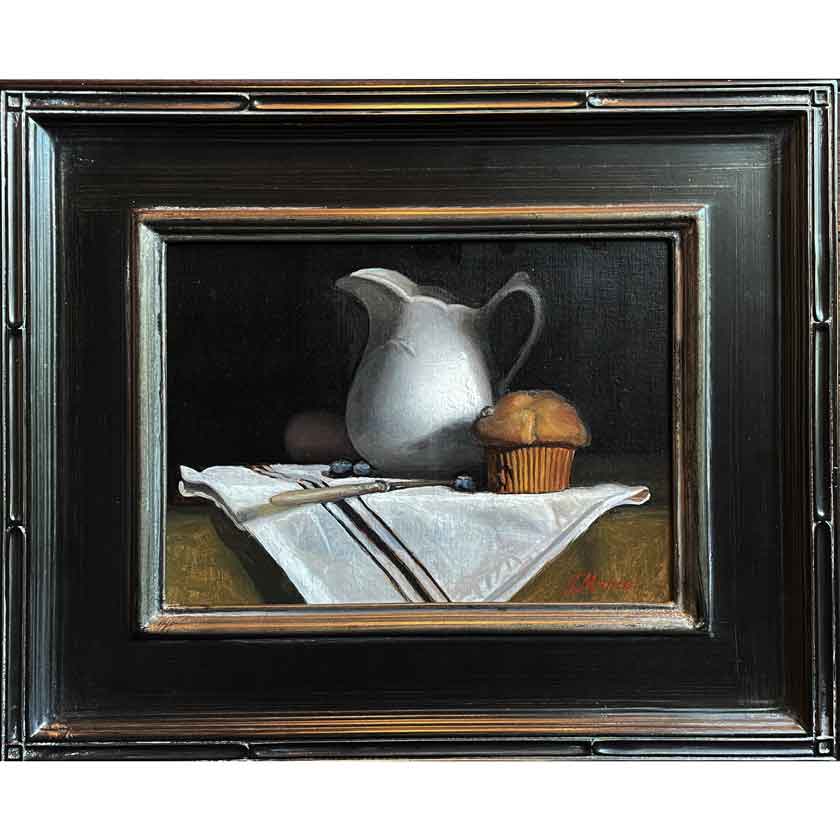Oil Paintings for Sale to Elevate Any Interior Space
Oil Paintings for Sale to Elevate Any Interior Space
Blog Article
What to Take into consideration in Choosing the Perfect Oil Paintings for Your Home Decoration


Recognizing Your Personal Design
Understanding one's individual style is essential when choosing oil paintings for home design. People have to initially show on their choices, thinking about elements such as color, theme, and psychological resonance. Some might be attracted in the direction of vivid abstract items that stimulate power, while others might choose peaceful landscapes that advertise serenity. Acknowledging whether one leans in the direction of contemporary minimalism or standard realistic look can assist the choice procedure. In addition, personal style commonly shows social impacts, experiences, and creative tastes, making it critical to pick items that reverberate deeply. By aligning their selections with their distinct aesthetic, individuals develop a natural atmosphere that enhances their space, ultimately resulting in a home that symbolizes their individuality and worths via art.
Considering the Dimension and Scale
Dimension and scale play a vital role in the effective assimilation of oil paintings into home design. Choosing the best dimensions guarantees that artworks enhance the room as opposed to bewilder or underwhelm it (oil paintings for sale). For larger rooms, considerable paintings can act as centerpieces, including deepness and passion. Conversely, smaller artworks can enhance cozy areas without triggering mess. It is critical to think about wall space and furniture arrangement when selecting dimensions; a well-placed paint can develop consistency and balance in a room. In addition, grouping smaller sized pieces can produce a cohesive gallery effect, while a solitary large canvas could stand alone as a statement piece. Eventually, the chosen size and scale must reflect the general layout intent of the home
Choosing the Right Shade Combination
Picking the right shade combination for oil paints is crucial to enhance a home's decoration. It not just matches existing home furnishings but likewise establishes the preferred state of mind for every space. Additionally, the effects of lights can significantly affect just how colors are regarded, making cautious consideration key.
Enhance Existing Decor
An unified color palette can change an area, making oil paintings an ideal option for improving home decor. When choosing art work, it is vital to consider the existing colors in the area. A paint that complements or contrasts the leading shades can produce visual rate of interest. If a space includes soft blues and whites, an oil painting with similar tones can unify the decoration, while a vibrant, different piece can offer as a focal point. In addition, recognizing the undertones in the area's color design-- whether cozy or cool-- can lead the choice of artwork. Inevitably, the appropriate oil painting ought to improve the total visual, creating a cohesive and inviting environment that reflects the home owner's individual design.
Establish the Mood
Choosing the ideal shade scheme for oil paints can substantially influence the state of mind of an area. Warm shades, such as reds and oranges, have a tendency to develop a welcoming and energetic environment, making them excellent for social spaces like living spaces. On the other hand, awesome tones, such as blues and eco-friendlies, advertise peace and leisure, ideal for rooms or reading spaces. Neutral shades, including grays and browns, can offer an advanced backdrop, permitting other components to radiate. Furthermore, thinking about the emotional effect of specific shades is essential; for instance, yellow can evoke happiness, while darker shades can instill a sense of drama. Inevitably, selecting a color palette that aligns with the desired atmosphere will boost the overall design and personal expression within the home.
Take Into Consideration Illumination Effects
The influence of lights on the assumption of oil paints can not be forgotten when curating a home decoration scheme. All-natural light, as an example, can substantially change the hues and appearances of an art work, enhancing its vibrancy or silencing its tones. In contrast, artificial illumination can create darkness or highlights that may either enhance or take away from the paint's total effect. Consequently, home owners should think about the intensity and kind of light in a room when choosing oil paintings. Warm illumination can enrich natural color combinations, while cooler illumination might fit more vivid, contemporary art. Inevitably, recognizing just how different illumination impacts color perception is crucial in choosing the right oil paints that harmonize with a room's ambiance and visual objectives.
Choosing a Motif or Subject Matter
When picking a motif or subject issue for oil paints, personal style preferences play a crucial duty in ensuring that the art work reverberates with the homeowner. In addition, thinking about the performance of each area can guide options that improve the general ambiance. Ultimately, keeping harmony with the existing color combination is crucial for developing a natural and welcoming room.
Personal Style Preference
Personal style choice plays a vital duty in choosing oil paints that improve home design. Individuals commonly gravitate toward details styles or topics that resonate with their personalities and tastes. For circumstances, a person with a propensity for nature might favor landscapes, while a person drawn to city life may pick cityscapes. Abstract art can interest those who appreciate modern-day aesthetic appeals, while standard study in still lives may attract traditionalists. The picked art work should reflect the homeowner's identity, developing a cohesive ambience. Shade schemes and emotional tones of the paints can substantially influence the space, adding to a preferred atmosphere. Ultimately, aligning the artwork with individual style preferences ensures that the chosen oil paints act as meaningful focal factors in the home.
Room Functionality Consideration
Just how can space functionality affect the option of oil paintings? The purpose of a space plays an essential duty in establishing the ideal motif or subject issue for oil paintings. In a serene room, abstract pieces or calming landscapes can evoke harmony and relaxation. Alternatively, in a lively living area, vibrant and dynamic art work might enhance the energised ambience. Eating locations can take advantage of food-related or still-life paints, which can boost conversation and appetite. In addition, the option of art work should align with the activities happening in the room; as an example, motivational pieces in an office can motivate performance. Ultimately, picking paintings that reverberate with the room's function guarantees a harmonious and welcoming setting.
Shade Scheme Consistency
A natural shade scheme is necessary for picking oil paintings that enhance the total design of a home. When picking art work, people should think about the existing shades within the room, consisting of wall surface tones, furnishings, and devices. Paints that complement or comparison sympathetically with these elements can raise the aesthetic charm of a space. Furthermore, picking a motif or subject issue that reverberates with the property owner's personal design creates a much more inviting ambience. Serene landscapes might suit a calming resort, while lively abstracts can energize a lively gathering space. Inevitably, the best mix of shade and motif warranties that the art work not only fits within the design however also adds to a linked and meaningful home setting.
Examining the Emotional Influence
What sensations do particular oil paints evoke in a visitor's room? The emotional effect of an artwork can greatly affect the setting of a space. Vibrant shades and dynamic brush strokes might inspire power and creativity, while softer tones and serene landscapes can stimulate serenity and peace. Abstract pieces typically prompt self-contemplation, inviting viewers to translate the emotions communicated. In addition, the topic plays an essential function; pictures can instill link, while nature scenes might foster a feeling of tranquility. Audiences may likewise locate fond memories in artwork that shows individual experiences or memories. Inevitably, choosing oil paintings that reverberate psychologically can transform a living setting, producing a room that feels genuine and inviting to its occupants.
Finding the Perfect Placement
Where in a home can oil paintings best boost the overall visual? Placement is considerable for maximizing the effect of oil paints. In living rooms, big items can work as centerpieces above fireplaces or sofas, drawing interest and triggering discussion. Entrances and corridors take advantage of smaller, organized works, creating a welcoming environment. In rooms, softer, calm landscapes or abstracts can advertise relaxation when hung over the bed. Eating locations can include vibrant items that stimulate hunger and conversation. It is necessary to think about illumination; natural light can modify the paint's look, so position artworks where they receive suitable illumination. Eventually, thoughtful positioning can raise the state of mind and cohesiveness of a room, making the artwork an essential part of the home's decoration.
Budgeting for Your Artwork
Establishing an allocate artwork is essential for any individual aiming to improve their home decoration. It helps to specify monetary limits, guaranteeing that the selection procedure stays enjoyable and sensible. Prospective buyers should consider their total costs capacity, consisting of expenses for framing, installment, and upkeep. Investigating various cost ranges for oil paints can also provide beneficial insights right into what to anticipate. Additionally, people may wish to prioritize their choices, whether they are attracted to emerging artists or established names, as this will substantially impact rates. By establishing a clear spending plan, art fanatics can concentrate on searching for items that not just resonate with their visual however also straighten with their monetary goals, causing a satisfying acquisition experience.
Often Asked Questions
How Do I Keep and Treatment for Oil Paintings?
Maintaining and caring for oil paintings entails keeping them in a secure atmosphere, preventing direct sunlight, dusting carefully with a soft cloth, and sometimes seeking advice from a specialist conservator for cleansing or remediation requirements.
Can Oil Paintings Be Hung in Humid Locations?
Oil paints can be hung in damp locations, yet care is recommended. Excess moisture might cause paint to degrade or canvas to warp. Appropriate air flow and climate control can help alleviate possible damage gradually.
What Is the Difference Between Initial Art and Prints?

Exactly how Do I Choose a Frame for My Oil Painting?
Selecting a framework for an oil painting involves taking into consideration the artwork's style, shade palette, and size. A well-selected structure enhances the more info item, enhancing its visual while protecting it from damage and including in its presentation.
Are There Specific Artists Known for Home Decoration Oil Paintings?
Several artists focus on oil paints ideal for home design, including Claude Monet for impressionistic landscapes, Gustav Klimt for decorative motifs, and Georgia O'Keeffe for lively flower make-ups, each offering distinct designs to boost interior spaces. Recognizing one's individual style is crucial when choosing oil paints for home style. Choosing the right color palette for oil paints is crucial to improve a home's decor. A harmonious shade scheme can change a room, making oil paints an optimal choice for enhancing home style. Individual design choice plays an important function in selecting oil paintings that enhance home design. A cohesive color palette is vital for choosing oil paintings that improve the overall design of a home.
Report this page